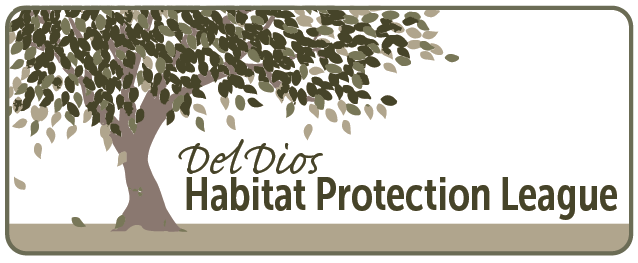One of the most important phases in habitat restoration is weed control. Greg Rubin, President and Founder of California’s Own Native Landscape Design, Inc., has been working with native California plants since 1985.
His article on habitat restoration explains why weed control is essential to a successful native restoration.
Habitat Restoration
To quote Bert Wilson, owner of Las Pilitas Nursery, ecosystem restoration is defined as "a planting composed of 100% California native plants with components from the pioneer, sub-climax and climax communities. The ecosystem should represent the native appearance in the 1600's, have no alien, foreign, exotic components present (i.e. weeds, plastics, fertilizers, soil amendments, etc.), and maintained for 1-3 years with no water." Notice that Bert uses the word "restoration" and not "revegetation", which is no more specifically defined than covering the ground with vegetation. His protocols are stringent but straightforward, and we believe him to be among the great environmental ecologists of today. We have adopted his methodology, and the results have met with unparalleled success.
Weed Control: The Most Essential Step
Image source: Greg Rubin, calown.com
When working to restore native ecosystems, weed control becomes absolutely paramount. The dramatic effect is seen in this photo (above), comparing a mature Englemann oak on the client’s property with a neighbor’s tree in the distance. Notice that the tree in the foreground has had all weeds removed, whereas the neighbor’s tree is still choked in oat grass, mustard, fillaree, and brome (all non-native). The client’s tree is vigorous, it’s yellow color coming from the blossoms that are covering it. It is currently putting on 3 feet of new growth per year. The neighbor’s tree is barely surviving, no flowers (and no acorns-no babies). This photo really illustrates the concept of weeds vs. natives as an ecological switch-you either have weeds, or you have natives. They do not co-exist well. Next time you chance upon a healthy stand of chaparral, take a look inside. There are no weeds. If you can get to 70% canopy coverage with your native plant community, and you use good mulch and no "artificial life-support", then the natural weed inhibiting characteristics of your native landscape kick in.
Natives Come Roaring Back
Weed control spells the difference between success and failure on a native restoration. Note the health of the oak trees and the return of long dormant and volunteer natives back on to the clean site.
Native Landscaping Books
The California Landscape: The Homeowner's Design Guide to Restoring Its Beauty and Balance, by Greg Rubin and Lucy Warren, is available from Amazon.
Greg Rubin and Lucy Warren's new book The Drought-Defying California Garden: 230 Native Plants for a Lush Low-Water Landscape, is available from Amazon.

